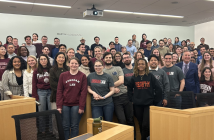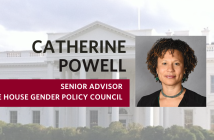New York – The buildup of security in cities across the United States, especially New York City, in response to the increased threat of terrorism has put the “very concept of the city under attack,” said urban historian Kenneth Jackson, Ph.D. The Columbia University professor spoke at the Urban Law Symposium titled “The Post-9/11 Cities: The Terrorist Threat and Its Implications for Planning and Policing Urban Areas.”
“New York City is an economic engine and one of the most efficient places in the world to make money,” said Jackson. “We can’t possibly make the city so secure without destroying the very reason we want to live here in the first place.”
The daylong conference, sponsored by the Fordham Urban Law Journal, the Louis Stein Center for Law and Ethics, and the William and Burton Cooper Chair on Urban Legal Issues, examined the impact the threat of terrorism has had on urban architecture and design, constitutional rights, and security in American cities.
Following the attacks of Sept. 11, 2001, security barricades were erected around potential terrorist targets and access was limited at many public places.
“The security parameters…that are so central to the response for 9/11…fundamentally endanger our ability to build cities in the spirit that has created their greatness,” said David Dixon, an urban designer at Goody Clancy & Associates in Boston, Mass., and a panelist at the conference. “It is the buildings and spaces that promote the free exchange of ideas and that are the bedrock of great cities.”
Peter Marcuse, a professor at the Columbia University Graduate School of Architecture, Planning and Preservation, echoed that belief and explained that the attacks prompted a shift in priorities in major cities that has “distorted” their planning processes.
There are efforts underway to limit the adverse impact of security measures at public places. Patricia Gallagher, executive director for the National Capital Planning Commission in Washington, D.C. and a panelist said, that her commission provides planning guidance for federal land and buildings in and around Washington, D.C. Utilizing street furniture, benches, lampposts, bus shelters, water fountains, garden walls, planters and fencing, the commission strives to improve security while not undermining the form and function of public places.


